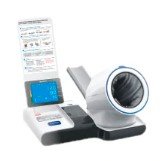Understanding the Typical Costs of Ordering Phlebotomy Supplies in the United States: Tips for Healthcare Facilities
Summary
- Understanding the typical costs associated with ordering phlebotomy supplies in the United States is essential for medical labs and healthcare facilities.
- Costs can vary depending on the supplier, the quantity of supplies ordered, and the specific items needed.
- By comparing prices and quality from different domestic suppliers, Healthcare Providers can make informed decisions to optimize their budgets without compromising patient care.
Introduction
Phlebotomy is a critical process in healthcare settings that involves drawing blood samples from patients for various Diagnostic Tests and treatments. To ensure the safety and efficiency of this procedure, Healthcare Providers rely on high-quality phlebotomy supplies. From needles and syringes to blood collection tubes and tourniquets, these supplies play a vital role in delivering accurate and reliable results.
Factors Affecting Costs
When it comes to ordering phlebotomy supplies from domestic suppliers in the United States, several factors can impact the overall costs. It's essential for medical labs and healthcare facilities to consider these factors to make informed decisions about their supply purchases.
Supplier Pricing
One of the most significant factors affecting the costs of phlebotomy supplies is the pricing offered by different suppliers. Domestic suppliers may vary in their pricing, depending on factors such as overhead costs, manufacturing processes, and profit margins. Healthcare Providers should compare prices from multiple suppliers to find the best value for their budget.
Quantity Discounts
Another factor that can influence costs is the quantity of supplies ordered. Many suppliers offer discounts for bulk orders, allowing Healthcare Providers to save money when purchasing larger quantities of phlebotomy supplies. However, it's essential to balance cost savings with inventory management to avoid overstocking or wastage.
Supply Quality
While cost is a crucial consideration, Healthcare Providers should also prioritize the quality of phlebotomy supplies. Choosing low-quality supplies to save money can lead to unreliable results, patient discomfort, and potential safety risks. It's essential to strike a balance between cost-effectiveness and supply quality to ensure optimal patient care.
Common Phlebotomy Supplies and Costs
Phlebotomy supplies encompass a wide range of items that are essential for drawing blood samples and conducting Diagnostic Tests. Here are some common phlebotomy supplies and their typical costs when ordered from domestic suppliers in the United States:
Needles
- Standard phlebotomy needles: $0.20 to $0.50 per unit
- Butterfly needles: $0.50 to $1.00 per unit
- Safety needles: $1.00 to $2.00 per unit
Blood Collection Tubes
- Plain tubes: $0.10 to $0.30 per unit
- EDTA tubes: $0.30 to $0.50 per unit
- Serum separator tubes: $0.40 to $0.60 per unit
Tourniquets
- Disposable tourniquets: $0.05 to $0.10 per unit
- Reusable tourniquets: $1.00 to $2.00 per unit
Gauze and Bandages
- Gauze pads: $0.05 to $0.10 per unit
- Adhesive bandages: $0.10 to $0.20 per unit
Cost-Saving Strategies
To optimize their budgets and minimize costs when ordering phlebotomy supplies, Healthcare Providers can consider the following strategies:
Comparison Shopping
Compare prices from multiple domestic suppliers to find the best value for phlebotomy supplies without compromising quality.
Inventory Management
Monitor supply usage and ordering patterns to avoid overstocking or shortages, which can lead to unnecessary costs.
Quality Assurance
Prioritize the quality of phlebotomy supplies to ensure accurate and reliable results, which can prevent costly errors and retests.
Conclusion
Understanding the typical costs associated with ordering phlebotomy supplies from domestic suppliers in the United States is crucial for medical labs and healthcare facilities. By considering factors such as supplier pricing, quantity discounts, and supply quality, Healthcare Providers can make informed decisions to optimize their budgets while maintaining the highest standards of patient care.

Disclaimer: The content provided on this blog is for informational purposes only, reflecting the personal opinions and insights of the author(s) on the topics. The information provided should not be used for diagnosing or treating a health problem or disease, and those seeking personal medical advice should consult with a licensed physician. Always seek the advice of your doctor or other qualified health provider regarding a medical condition. Never disregard professional medical advice or delay in seeking it because of something you have read on this website. If you think you may have a medical emergency, call 911 or go to the nearest emergency room immediately. No physician-patient relationship is created by this web site or its use. No contributors to this web site make any representations, express or implied, with respect to the information provided herein or to its use. While we strive to share accurate and up-to-date information, we cannot guarantee the completeness, reliability, or accuracy of the content. The blog may also include links to external websites and resources for the convenience of our readers. Please note that linking to other sites does not imply endorsement of their content, practices, or services by us. Readers should use their discretion and judgment while exploring any external links and resources mentioned on this blog.
